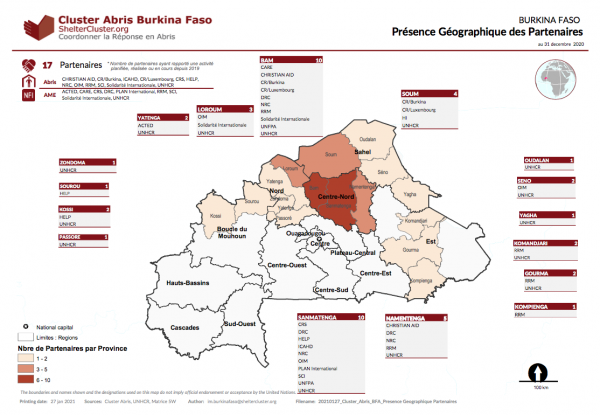Highlights
1. Since end of last year, displacements of population have increased significantly, reaching the figure of 1,312,071 internally displaced people by the 30th of June 2021 (22% increase).
2. Centre-North and Sahel regions remain the most affected regions of the country, each of them with 36 % of the total registered displaced population. They are followed by the Nord (8 %), the Est (8 %) and the Boucle de Mouhoun (3%). Displaced population are also seeking for refuge in others regions of the country, like Centre-Est (2 %) et Hauts Bassins (2 %).
3. New population movements show a slight increase of IDP in both the Sahel with 124,529 (33% increase) new registered IDP, and the Est region with 25,394 IDP (32% increase) since the beginning of the year. 99% of the movements are intra regional.
4. The response rate is still low at mid-year, 9,468 households were reached in Shelter solutions (13%) and 11,678 households reached for NFI kits (13%).
5. Out of the new coming emergency alerts, Shelter cluster partners have made notable interventions to assist the displaced households within various host areas ; 4,663 households were assisted in emergency shelter kits and 9,182 households were facilitated in Non Food Items. However, important response gaps still exist in order to cover all the affected households in need.
